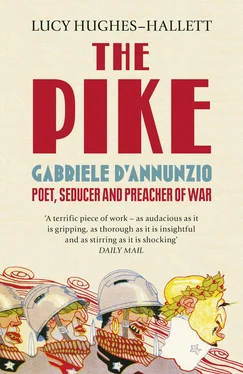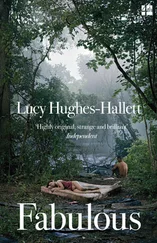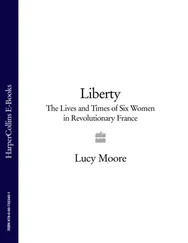For over a century European intellectuals had been searching in isolated rural communities for remnants of obsolete folk cultures. Ethnography was practised most enthusiastically in situations where nationalism needed to assert itself against an alien regime. James Macpherson, ‘discovering’ ancient Gaelic poems (most of them, published under the name of Ossian, his own forgeries) and his admirer and successor Sir Walter Scott, collecting songs and tales in the Scottish Highlands, were intent on demonstrating that Scotland had as rich a cultural heritage as England, its politically dominant neighbour to the south. While Jacob and Wilhelm Grimm were growing up, the majority of German states were under Napoleonic rule. Their collecting of fairy tales ‘found among the common German peasantry’ was not just conservationist, it was ‘imaginative state-building’. The Gaelic League, set up in Ireland in 1893 for the preservation and promotion of Gaelic language and literature, aimed to provide inspiration for an independent Irish state.
So Michetti, touring the Abruzzi in search of picturesque peasant girls in embroidered bodices and home-spun red skirts, and Tosti, with his transcriptions of the songs sung by harvesters in the fields, were providing the cultural underpinnings for the new Italian nation. But it was not easy, as many patriotic ethnographers discovered, to identify authentic relics of indigenous culture. Several of the stories the Grimms collected to provide the new Germany with an unadulterated German back-story were in fact imported by French Huguenots. So d’Annunzio’s Italian friends were swayed by non-Italian influences. Their subject matter was local, but their interest in it was aroused by foreign examples. Michetti’s paintings owe much to the French realists: Corot, Courbet and Millet. Even the name of their fellowship was a borrowing. Over half a century earlier, in Paris, Victor Hugo had presided over a ‘Cénacle’.
At Francavilla, d’Annunzio swam: he was an exceptionally strong swimmer. ‘We bathed down there, like savages on the bare beach.’ He galloped his horse along the sand and rowed his little boat offshore. He and his friends cooked for each other, as inexpertly as young men accustomed to being waited on by servants or mothers have always cooked; he was to remember with pride a gigantic omelette he managed. Michetti posed his guests for photographs on the beach: d’Annunzio looks as faunlike as he liked to imagine himself – curly hair falling forward, a slight body taut with energy. There are women in some of the pictures, incongruously overdressed by contrast with the men, in long-sleeved gowns and big hats. This was not the monastic retreat d’Annunzio suggested in writing to Elda.

In the evenings there was wine, although d’Annunzio – then and for the rest of his life – was an abstemious drinker. There was opium, which he took to with gusto (‘in no time I became a passionate opium eater’). Aware that he was being ‘stunned’ by the drug, he soon left off taking it (‘but what beautiful moments I had!’). At night, sitting out among olive trees whose branches had been turned silver by the full moon (an effect d’Annunzio would use repeatedly in his fiction), they sang the choruses and lullabies that Tosti had been collecting and weaving into his newly composed ‘serenades’. Sometimes they would hear those eerie, repetitive melodies echoed back to them by unseen workers in the countryside around.
During the summer of 1880, Michetti and d’Annunzio made two excursions which were to be particularly fruitful for both of them. One took them to the village of Tocco di Casauria at harvest time. There they witnessed a scene involving a handsome young woman and some drunken harvesters. Michetti began that winter to make studies for one of his most celebrated paintings, La Figlia di Jorio (Jorio’s Daughter), which was finally exhibited at the first Venice Biennale fourteen years later. It shows a peasant girl, in a scarlet dress and shawl, hurrying past a group of leering men. D’Annunzio was to make something much more violent of the subject. He described the event in an interview: ‘Suddenly there burst into the little square a beautiful young woman, crying and dishevelled, followed by a throng of harvesters, brutalised by the sun, by wine and lust.’ From that one tableau he would devise a story of sexual transgression and mob violence which, nearly a quarter of a century later, became his most successful play, also called Jorio’s Daughter.
The other memorable outing was their visit, on a suffocatingly hot summer’s day, to the church of San Pantaleone at Miglianico. The church was crammed with pilgrims who had come to celebrate the saint’s feast day, to expiate sins and pray for miracles. Michetti depicted the scene in his painting The Vow, which was exhibited in Rome in 1883 to great acclaim. He makes a grand spectacle of the gorgeous colours of the girls’ embroidered costumes, the slanting light from the church’s high windows and the tragic drama of the dying come to beg for grace.
To d’Annunzio, though, the scene in the church was a horror show. In his account an animal stench rises from the bodies crammed together in the dimly lit church. At the centre of the crowd a kind of furrow is left open, a narrow passage walled with humanity, along which crawl devotees. ‘Three, four, five lunatics came writhing with their bellies on the ground, with their tongues on the dust of the tiles, with their feet rigidly flexed to support the weight of their bodies. Reptiles.’ There is blood on their feet and hands. They are licking the floor before them as they inch forward, drawing crosses with their own saliva. ‘The red stains that one fanatic has left, are rubbed by the dry tongue of the next fanatic.’ The crawlers, one by one, approach the silver effigy of the saint, each one grasping him around the neck ‘with a supreme effort which seemed akin to hatred’ and each fix a bleeding mouth to the saint’s metal mouth and hang there, ‘with a kind of convulsion of pleasure’. The watchers moan.
D’Annunzio was to return to the scene again and again. His fullest description of what he had seen at Miglianico would not be published for another fifteen years, forming part of The Triumph of Death, but in his early stories he repeatedly plays variations on the themes of religious solace, religious frenzy, and the power of the mob.
During his last winter at school, d’Annunzio wrote several of the short stories which would be published in his first prose collection, Terra Virgine. Probably prompted by Tito Zucconi, he was reading Zola (in particular The Sin of Father Mouret), Victor Hugo’s Hunchback of Notre Dame, and Giovanni Verga’s newly published Life in the Fields. Soon, he discovered de Maupassant and Flaubert. Each new addition to his reading list can be detected in his own writing. He lifts a great deal from his foreign examples. He repeats phrases and reproduces syntactical construction. His plots are borrowed (one of his tragic-comic lovers is a bell ringer who pines away for love of a gypsy girl). His structures are ready made (The Virgin Anna follows the progression of Flaubert’s Un Cœur simple movement by movement). More importantly, the other writers’ realism had shown d’Annunzio that he could make use of the material he had found in his native province.
D’Annunzio was not a sentimentalist like Victor Hugo, nor a campaigner for social justice like Zola. When he describes the stultifying hardness of the lives of peasants or labourers, he does so not with compassion but with something closer to disgust. His stories of the Abruzzi are full of stupid violence. A beggar exhibiting his crippled child, a fisherman’s love perverted by jealousy, a pathetic idiot who takes pleasure in killing lizards very, very slowly. D’Annunzio took these examples of human degradation and embroidered around each of them a piece of carefully wrought prose. Michetti and his friends had taught him to pay attention to the culture of his homeland, with its rich heritage of ritual and belief. They had not persuaded him to like it. He has one of his fictional alter egos reflect that to discover that the countryside, whose beauty he loves, is home to so much primitive fear and credulity, is like running one’s fingers through a woman’s scented hair only to find, hidden beneath, ‘a teeming mass of lice’.
Читать дальше













